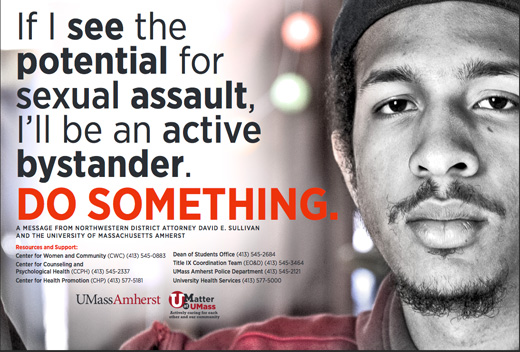
A new report released by the White House Task Force to Protect Students from Sexual Assault says that one in five college women suffers sexual assault. Most do not report the crimes.
The task force, formed January 2014, is charged with providing resources to help prevent assault and support survivors and to increase transparency and accountability from schools. The report, titled Not Alone, outlines an initiative meant to do just that by providing resources to identify the problem, prevent sexual assault, respond effectively, and improve the federal government’s enforcement efforts and transparency.
Not Alone
Though promising, there are shortfalls in the report. Improved data collection and a focus on combating the culture of sexual violence are among the better points Many take issue with the fact that investigating these crimes is still left in the hands of schools, who have interest in silencing victims to protect the institution’s reputation. Though this is true, there are steps included in the report to better hold schools accountable for not meeting their obligations.
Yet, the first step is a school climate survey, meant to help address the chronic underreporting of these crimes. Only 2 percent of incapacitated sexual assault survivors and 13 percent of rape survivors report the crimes. The Task Force provides a toolkit to guide campuses in creating their own surveys, calling on institutions to begin conducting surveys next year. In 2016, the report says it will explore legislative or administrative options to mandate the survey.
Section two focuses on combating a culture where sexual violence is seen as acceptable. Many in social justice call this concept “rape culture”. “If we get this right” the report says, “today’s students will leave college knowing that sexual assault is simply unacceptable.”
This section calls upon a CDC review of primary prevention strategies, which provides best practices for better prevention of sexual violence and a list of programs already in place.
Next, section two addresses programs to increase bystander intervention, mostly focusing on enlisting men as allies. The problem here is that the Task Force focuses on men at the expense of empowering the entire campus community.
The third section provides resources to help schools respond effectively to sexual assault. Confidential reporting and counseling systems are emphasized to support victims who aren’t prepared to file a formal complaint. The report also calls for schools to have a comprehensive sexual misconduct policy and training for school officials. New protocols to better hold offenders accountable, partnering with the community for comprehensive victim support, and using school researchers to find new solutions are also included in this section.
Section four is the only one to address actual consequences, focusing on improving the Federal Government’s enforcement efforts of existing laws, and making those efforts more transparent.
Enforcement
Title IX of the Education Amendments and Title IV of the Civil Rights Act require schools that receive federal financial aid and public schools, respectively to respond to sexual assaults committed against their students. The Clery Act requires that colleges and universities participating in federal financial aid programs to annually report statistics on crime on or near their campuses and to develop and circulate prevention policies.
To improve enforcement efforts, the Department of Education’s Office of Civil Rights (OCR) is providing better clarity on schools’ obligations under Title IX and strengthening enforcement procedures. Time limits for negotiating voluntary resolution agreements for Title IX violations will be instituted to lessen frustration for survivors and prevent schools from extending negotiations to delay enforcement.
The OCR has also made explicit that schools should provide survivors with relief services, such as counseling and housing changes, during an OCR investigation. During an investigation, OCR will also make itself more visible and reach out to more people on campus in order to determine whether there is a problem on campus.
The Department of Education has also provided a chart outlining how schools’ obligations under Title IX and the Clery Act intersect with the Family Educational Rights and Privacy Act (FERPA), which protects the privacy of student education records.
In order to streamline investigations, the agencies responsible for enforcing the relevant laws have entered into formalized agreements outlining and clarifying their respective roles in an investigation.
For better transparency, the Task Force launched notalone.gov. The site provides resources outlining students’ rights under Titles IX and IV and the Clery Act and how to file a complaint against their school for not meeting its obligations. There is also guidance for schools in developing sexual assault policies and procedures and to help them understand their responsibilities.
There are two interactive maps on the Not Alone site. One provides local support services, found by typing in your zip code. The other provides information on resolved school-level enforcement activities.
Going forward
The Task Force says they plan to continue working towards solutions. They will continue reviewing relevant laws and regulations for possible improvements. They will seek new resources, such as campus police, to enhance enforcement. Most importantly the Task Force says it will consider how their recommendations apply to public elementary and secondary schools, and how they can better help there.
The report fails male survivors by virtually erasing them. A single sentence “Although it happens less often, men, too, are victims of these crimes” mentions them. Though women are the overwhelming majority of rape, one in five men experiences sexual violence other than rape, according to a 2011 survey.
The task force also does not address the special circumstances of minorities, such as people with disabilities, who face a much higher rate of sexual violence, and the LGBTQ community, which faces unique problems when reporting.
Only time can tell whether these plans will help prevent sexualized crimes on campuses. Only three months after the formation of the Task Force, this is a promising start because of its focus on prevention. The report’s last sentence “Our work continues” says it all. There is a daunting amount of work to be done, especially in the prevention of these crimes, starting long before college age.
Image: Poster for the UMass “Do Something” campaign.












Comments